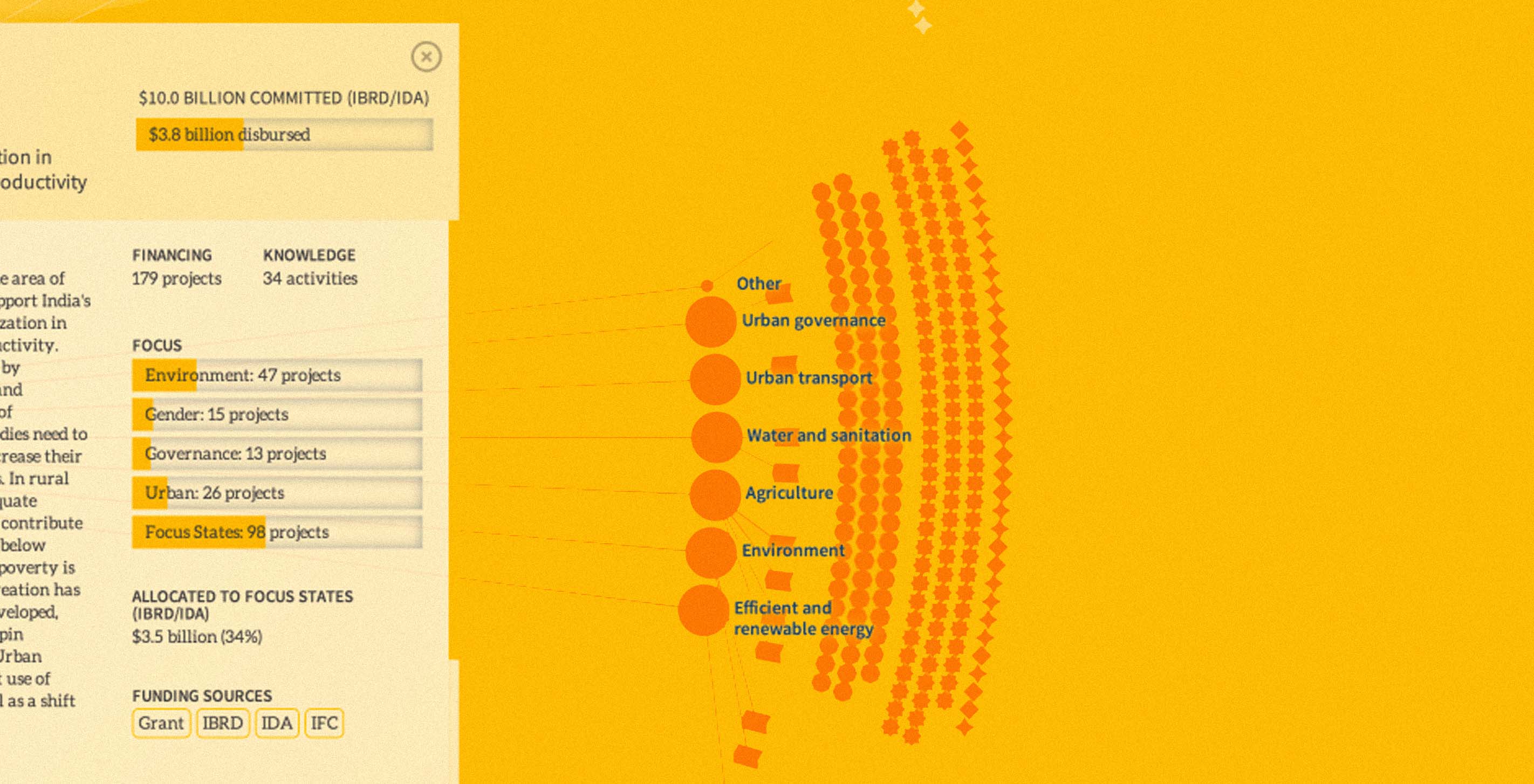

India's economic and social growth have been strong for many decades, but the nation still faces a number of development challenges. The economic infrastructure can't yet support the growth needed to lift the population out of poverty. City and municipal services are strained as India experiences one of largest rural-to-urban migrations in history. Many states still face challenges related to health and nutrition, education, social protection, and skills development.
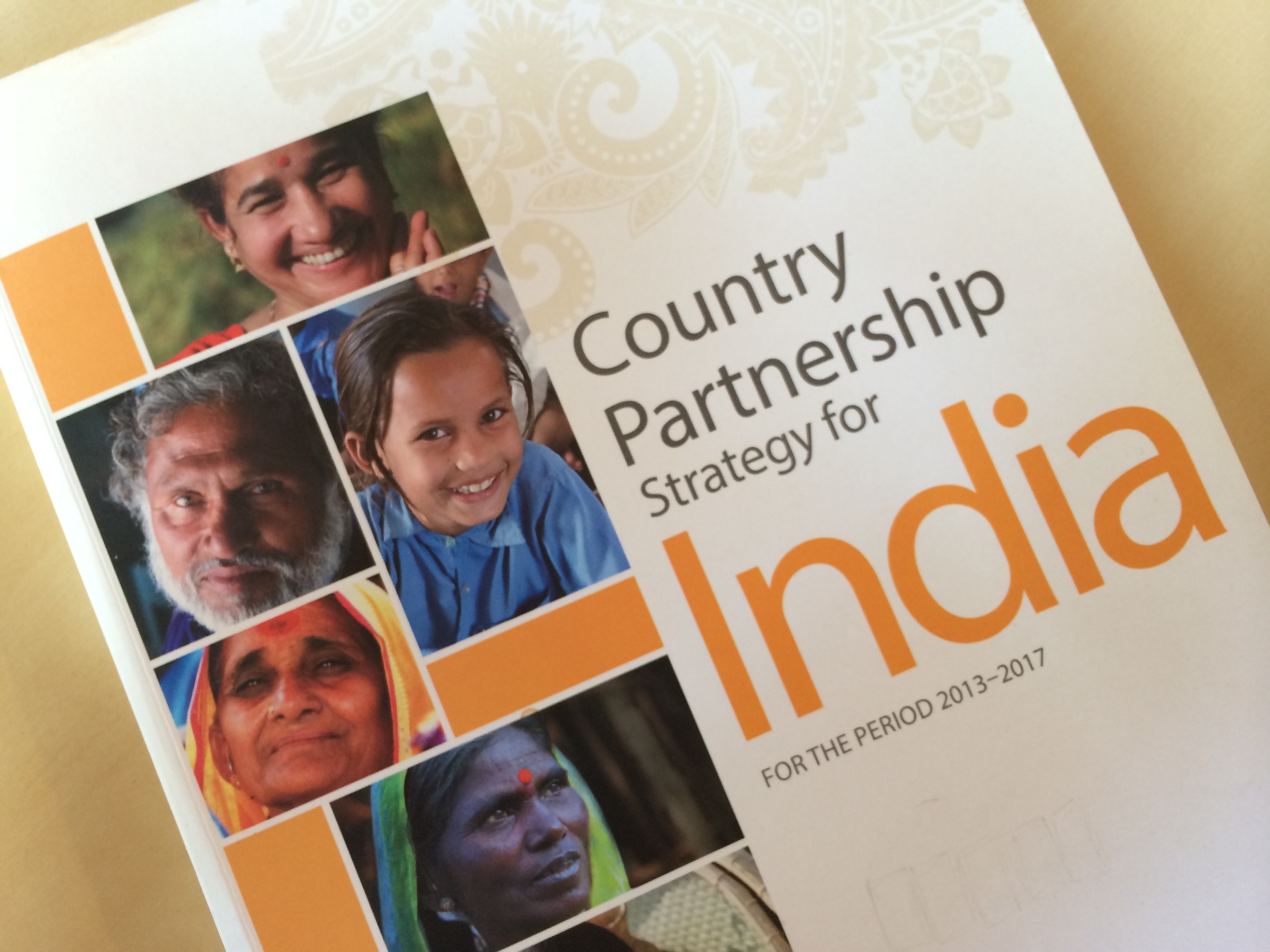
The CPS began life in the form of a book. Our task was to create an experience that highlights the progress and obstacles facing the nation as it seeks to lift one-third of the world's poor out of poverty. We were excited to take on the challenge of navigating the strategy's complex structure, and finding a way for users to understand the progress that has been made, and the goals the country still faces.
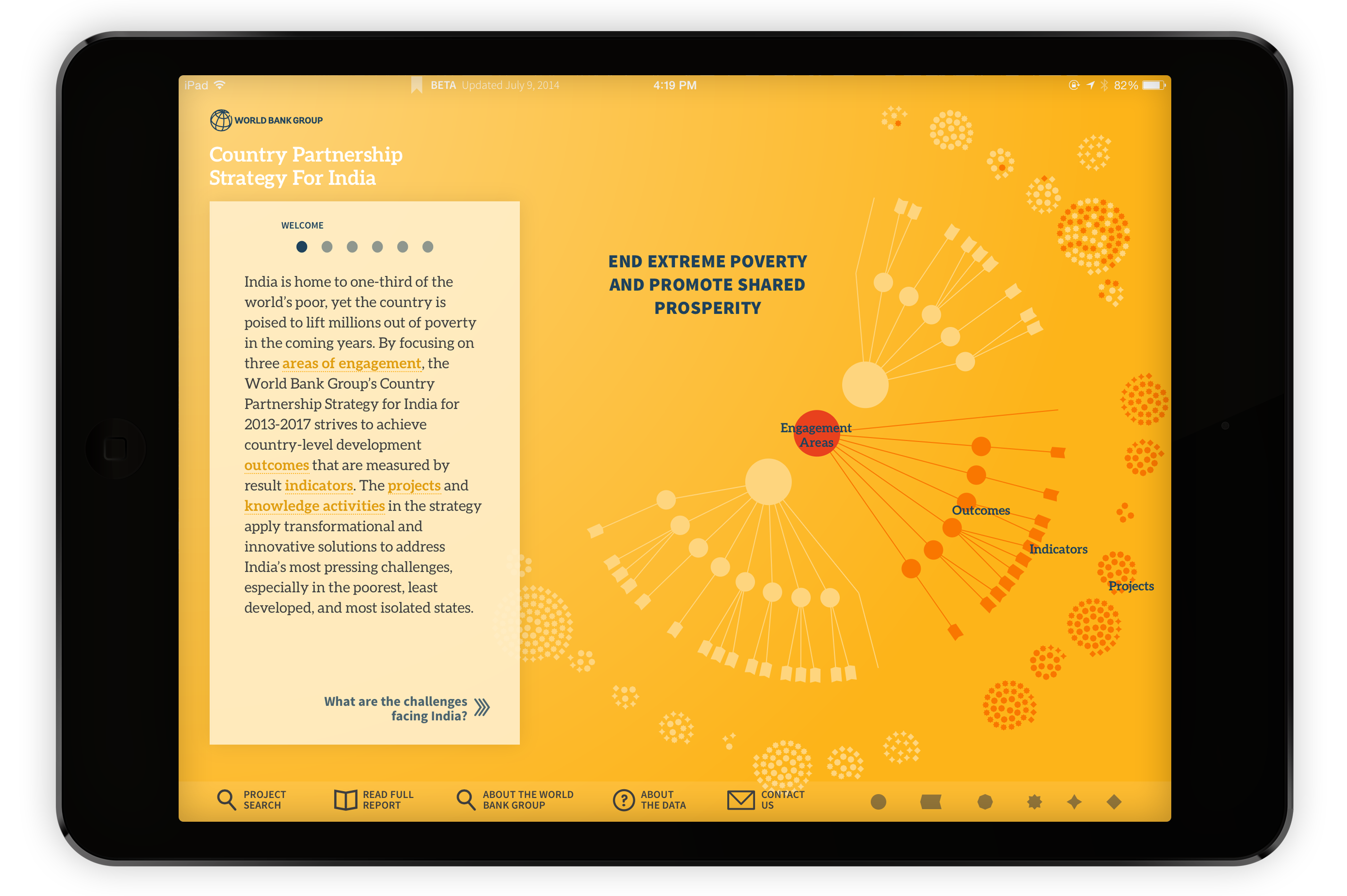
The CPS is organized around three areas of engagement — integration, transformation, and inclusion. Nineteen country-level outcomes are grouped loosely within these areas, and represent high-level objectives within the World Bank Group's strategy. Each outcome is measured by one or more results indicators, and the app is designed to change over time to reflect progress in each of these metrics. These outcomes and indicators help the World Bank Group track the progress of hundreds of projects and knowledge activities taking place across India.
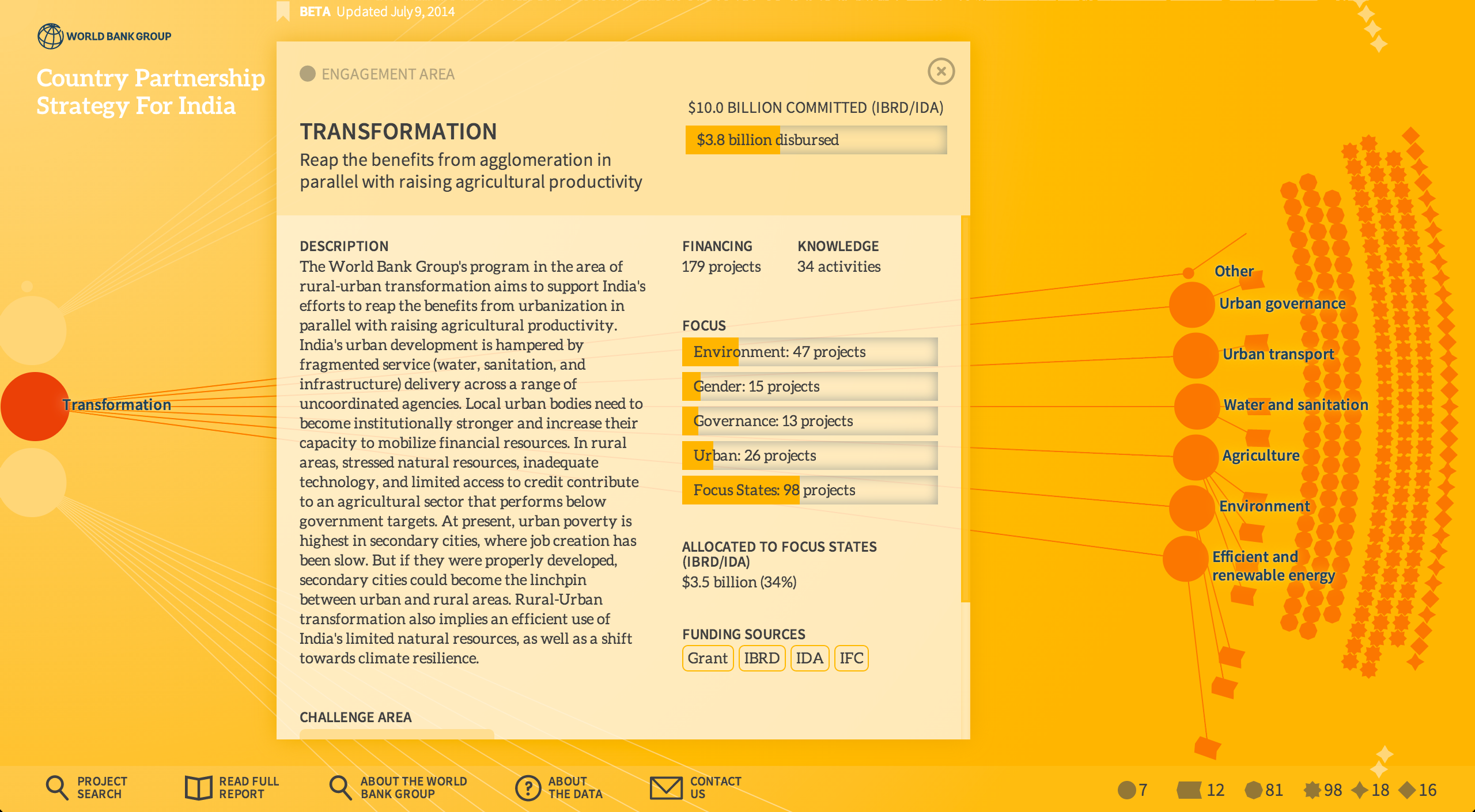
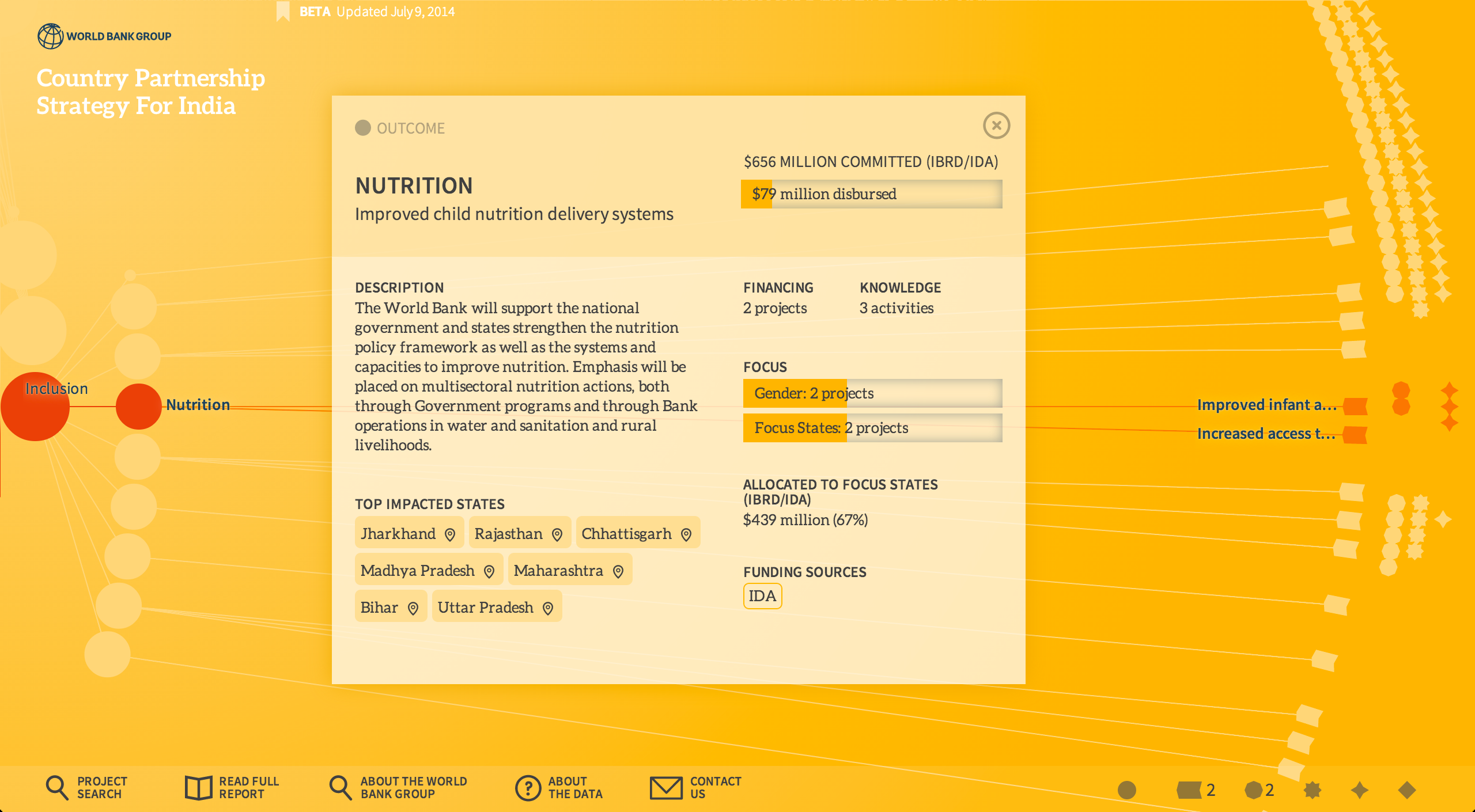
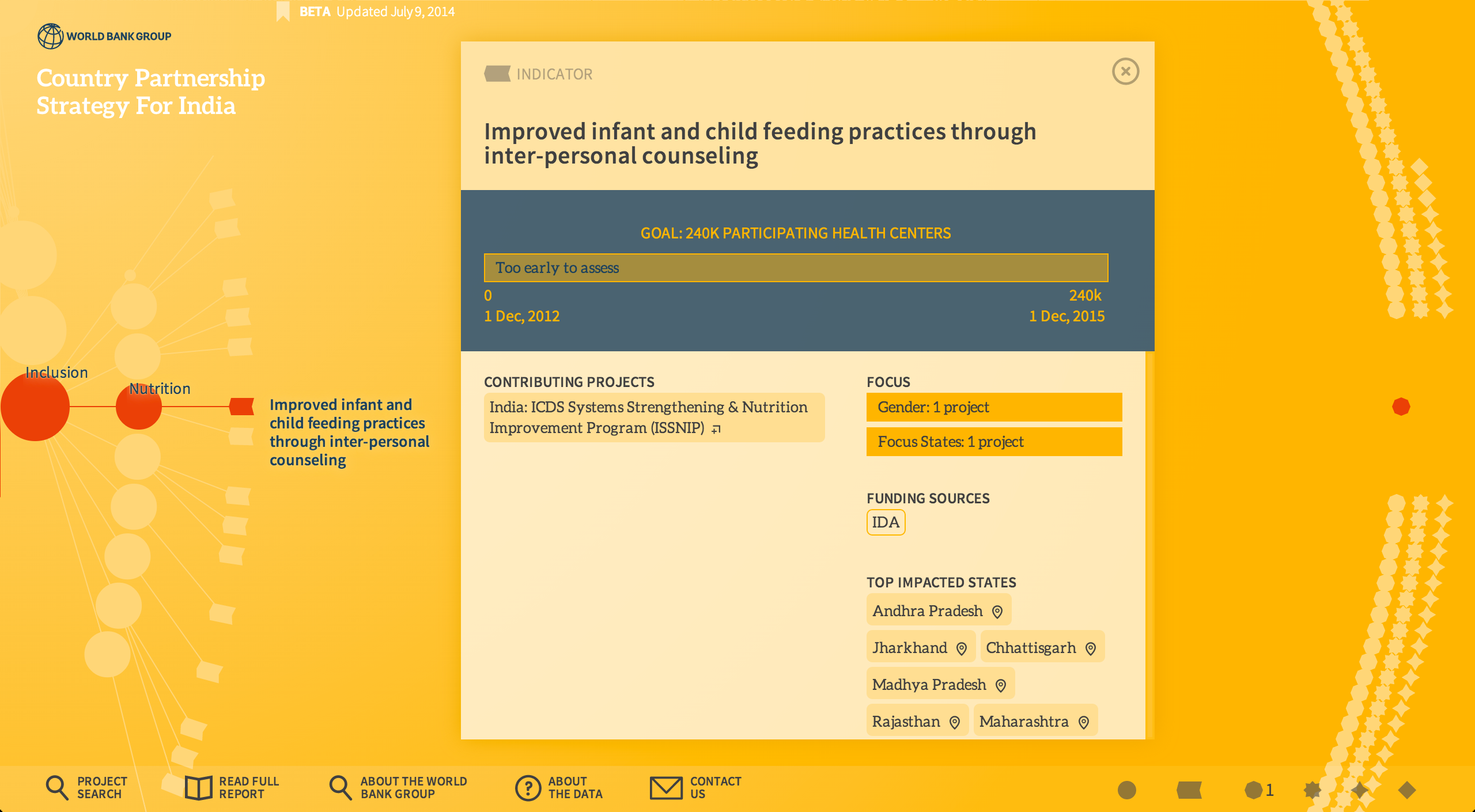
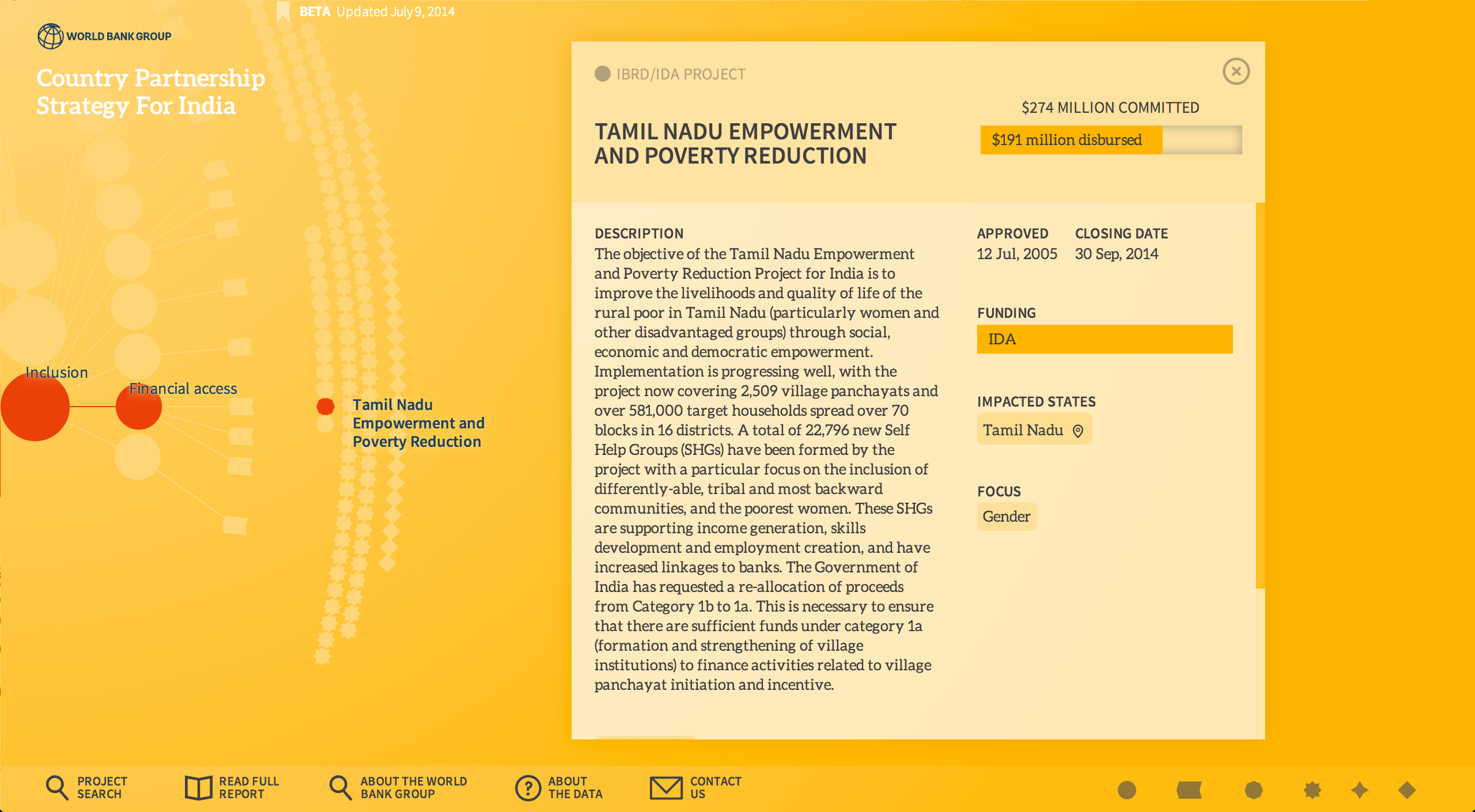
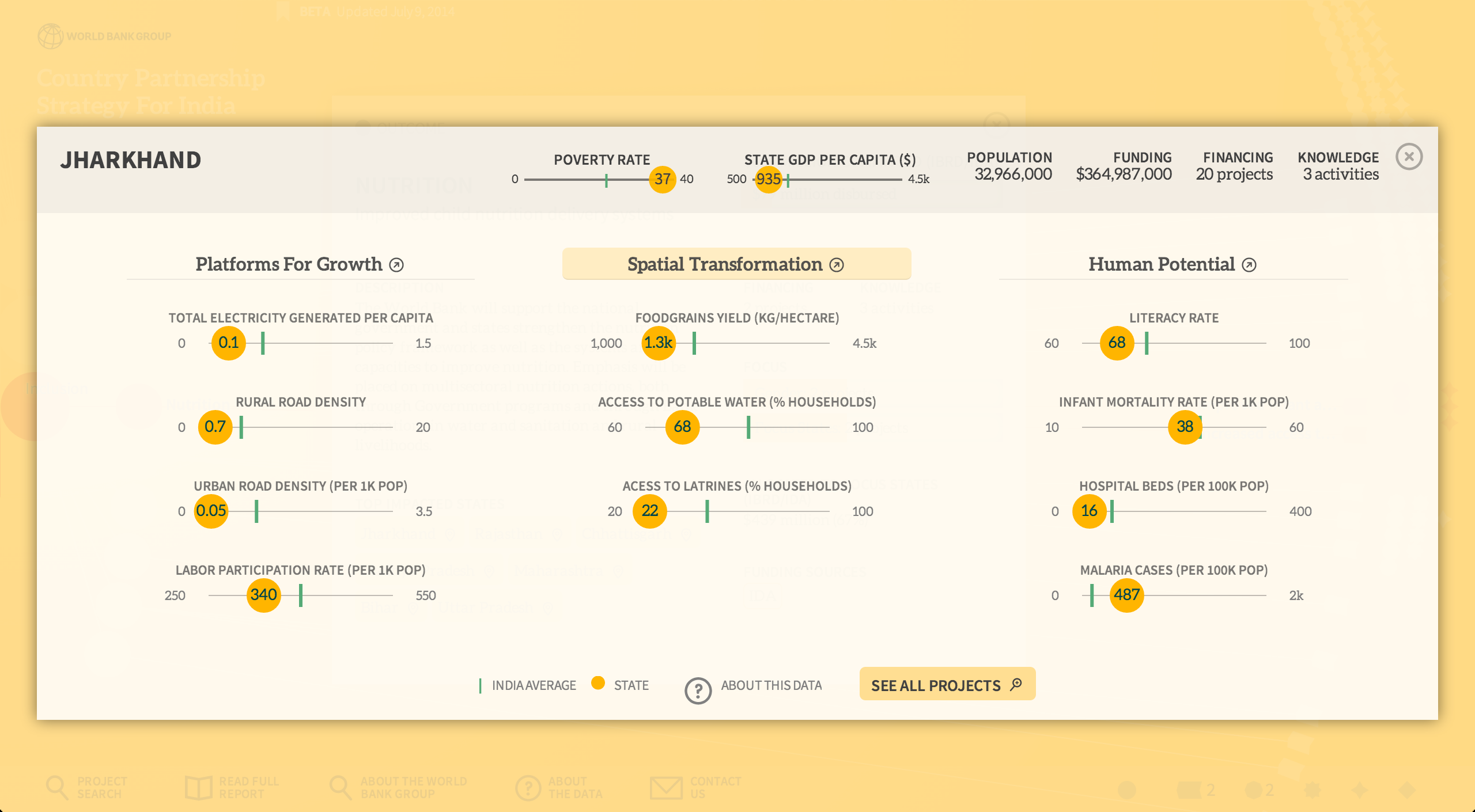
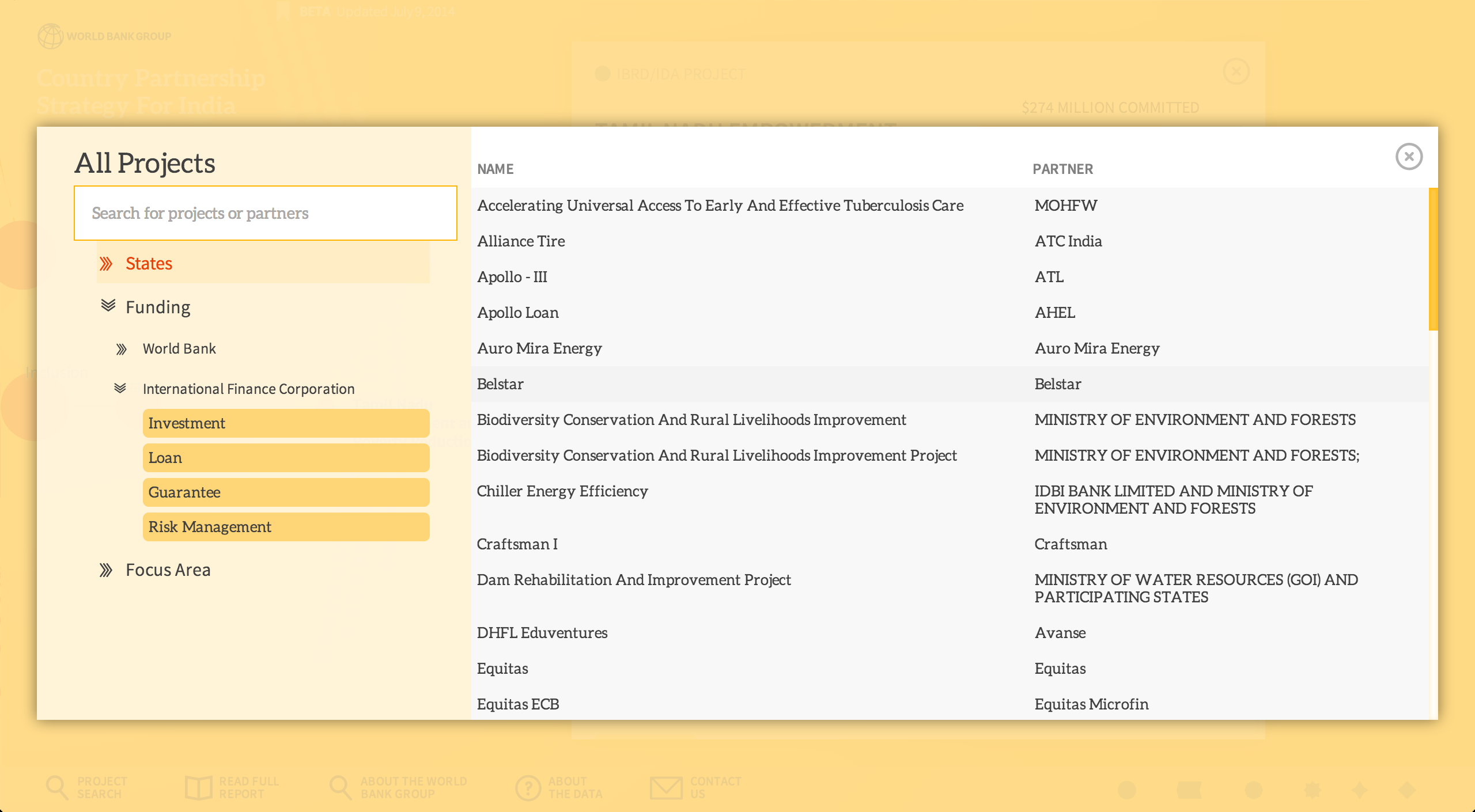
The tool enables users to measure progress by exploring the number of projects, the amount of funding, and the set of states influenced within each engagement area, outcome, or indicator. Further, the site contextualizes the World Bank Group's goals through the lens of existing challenge areas, focus states, gender equality, and urbanization.
We’d love to hear what you’re working on, what you’re curious about, and what messy data problems we can help you solve. Drop us a line at hello@fathom.info, or you can subscribe to our newsletter for updates.